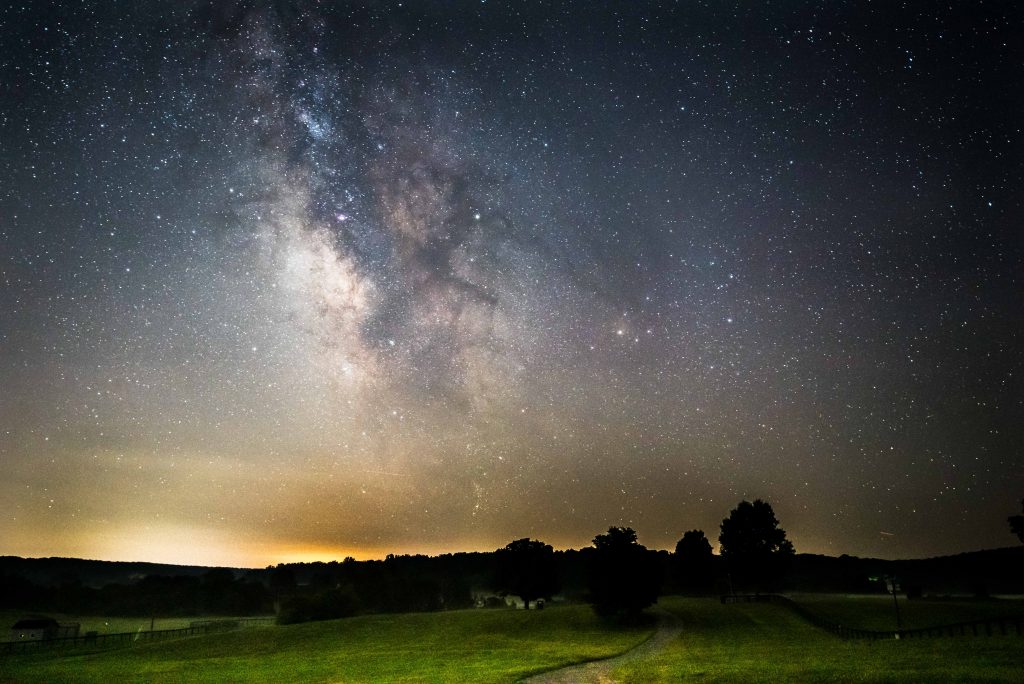Northern summer and southern winter get underway as Jupiter, Mars, and Saturn continue their march upward into the early morning sky. The pair make a photogenic rendezvous with the Pleiades and Hyades at the beginning and end of the month. Mercury makes a good apparition in the evening sky, especially for southern-hemisphere skywatchers. The Moon occults a bright star while a meteor shower arrives during the latter half of the month. And don’t forget about the Milky Way emerging in the darkening east-southeastern sky after sunset. Turn your optics along this spectacular river of stars to glimpse the many clusters, nebulae, and star clouds in our part of the galaxy. Here’s what’s in the night sky this month…

1 July July July 2024. Start the month off right by heading out into the morning twilight to see a thin crescent Moon about 4o west of Mars rising in the east along with Jupiter, the Pleiades, and Hyades star clusters. Mars continues to brighten slowly and today shines at 1st magnitude, the same brightness and nearly the same color as the red giant star Aldebaran to the east. Mars crosses from Aries into Taurus on July 11.
3 July. A thinning crescent Moon passes less than 5o from Jupiter low in the eastern morning sky near the stars of the Hyades.
5 July. New Moon, 22:57 UT
5 July. Earth reaches aphelion, the furthest point from the Sun in its elliptical orbit. Today the centers of the two celestial bodies are 152,099,968 km apart.

7 July. Grab a pair of binoculars and look westward to spot a slender crescent Moon about 3o east of Mercury low in the evening twilight. The planet shines at magnitude -0.2 and presents a 6” wide disk that’s 2/3 illuminated. The planet remains in the sky until later in the month as it presents its best evening apparition of the year for southern-hemisphere stargazers.
8 July. Jupiter lies about 5o north of Aldebaran over the eastern horizon before sunrise. Compare the planet’s whitish-yellow hue to the star’s evident orange color and to Mars further to the west. Jupiter’s getting big enough for profitable observations in a telescope. It shines at magnitude -2.0 now and spans nearly 35” in a telescope. Most observers can see several double shadows and transits of Jupiter’s four largest moons during the month. This little online tool from Sky & Telescope helps predict when you can see them.
13 July. First Quarter Moon, 22:49 UT
13-14 July. The first-quarter Moon occults the bright star Spica in the constellation Virgo for observers in most of North and Central America. The star disappears behind the darkened limb and reappears from behind the bright lunar limb. Timing and visibility for hundreds of locations is available at this link.
17 July. A fat gibbous Moon encroaches on the northern summer Milky Way over the next few nights. Tonight, it lies less than 4o from Antares, the red supergiant star at the heart of Scorpius.
21 July. Full Moon, 10:17 UT (the ‘Full Buck Moon’)
22 July. Mercury reaches its greatest eastern elongation about 27o from the Sun in the evening sky.

24 July. Look eastward an hour before midnight to see the waxing gibbous Moon and Saturn rising about 5o apart. From now through November, the planet is in its best position for telescopic observation. The rings are tilted at just 2o from edge-on which makes for interesting viewing.
28 July. Last Quarter Moon, 02:52 UT
28-31 July. The morning display of Mars and Jupiter near the stars of the Pleiades and Hyades repeats itself in the eastern twilight sky.
29-31 July. The Delta Aquarid meteor shower peaks. This annual event favors observers in the southern hemisphere and southerly latitudes in the northern hemisphere, though all observers can see some of these slow-moving meteors. The Delta Aquariids appear to radiate from a point near the star Skat (delta Aquarii) in the constellation Aquarius. The shower peaks around July 28-30, but unlike most meteor showers, the Delta Aquarids lack a sharp maximum so meteors are visible from mid-July through early August. The maximum hourly rate can reach 15-20 meteors in a dark sky.
